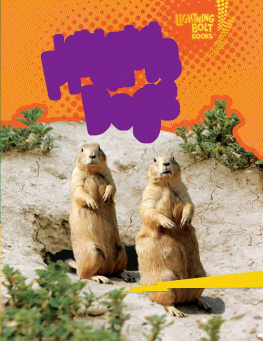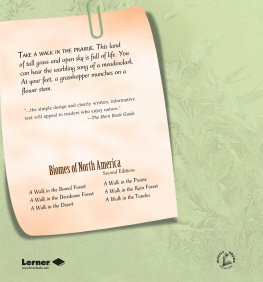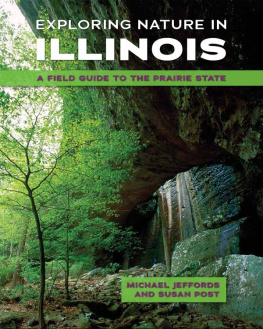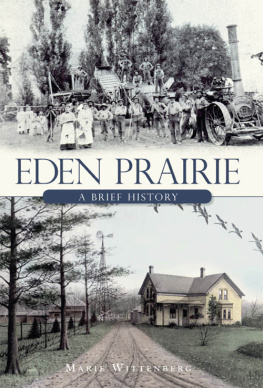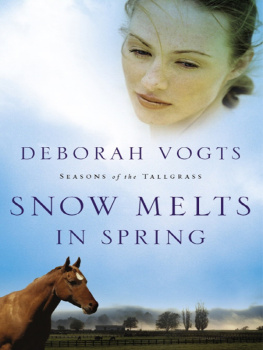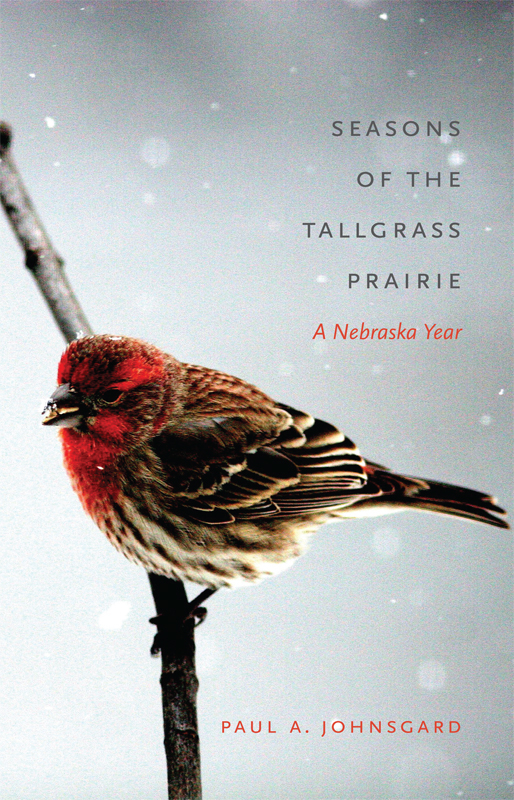
Praise for Paul A. Johnsgards Prairie Dog Empire
Many scientists and historians have written about the natural history of the Great Plains, but few so compellingly as Paul Johnsgard.
Annals of Iowa
Johnsgard provides a book that should be on the shelf of every person interested in and concerned about the past history and future of life on the Great Plains.
Manhattan Mercury
Anyone with an interest in the ecology and history of the shortgrass prairie will become immersed in the pages of this engaging book.
North Dakota History

Peregrine falcon and bufflehead
Seasons of the Tallgrass Prairie
A Nebraska Year
Paul A. Johnsgard
University of Nebraska Press | Lincoln and London
2014 by the Board of Regents of the University of Nebraska. Illustrations Paul Johnsgard.
Cover image courtesy of the author.
Author photo courtesy of the author.
Acknowledgments for the use of copyrighted material appear in , which constitute an extension of the copyright page.
All rights reserved.
Library of Congress Cataloging-in-Publication Data
Johnsgard, Paul A.
Seasons of the tallgrass prairie: a Nebraska year / Paul A. Johnsgard.
pages cm
Summary: A collection of essays on prairie wildlife and ecologyProvided by publisher.
Includes bibliographical references.
ISBN 978-0-8032-5337-7 (paperback: alk. paper)
ISBN 978-0-8032-5697-2 (epub)
ISBN 978-0-8032-5698-9 (mobi)
ISBN 978-0-8032-5696-5 (pdf)
1. Prairie ecologyNebraska. 2. Natural historyNebraska. 3. NebraskaEnvironmental conditions. I. Title.
QH 105. N 2 J 635 2014
577.4'409782dc23
2014017095
The publisher does not have any control over and does not assume any responsibility for author or third-party websites or their content.
Dedicated to all who fought all the past battles to preserve and protect Nebraskas natural resources, to those doing so today, and to any who will take on the future challenges to keep Nebraska a special place for both humans and all of our fellow travelers.
Contents
This collection of essays had its origins mostly by chance. At times, after a wonderful day out-of-doors in Nebraska, I have felt compelled to sit down and summarize some of my immediate past experiences. That is how the first of the essays came about, after a quasi-religious visit to an ancient Pawnee sacred site. Others, such as the essays on snow geese and the Platte River, were written only after months of growing concern over what I have come to believe is an increasingly short-range attitude about the value, beauties, and needs for preservation of our states finite natural resources of land, water, and ecosystems. Still other essays were written at the suggestion of friends or to comply with a magazine or newspaper editors request for a timely story.
In any case, nearly this entire collection of essays has, in large part, been extracted from my already published writings. The great majority of them were written for Prairie Fire, a monthly independent newspaper published in Lincoln. The progressive stance of Prairie Fire as to important environmental and political issues is so refreshing and welcome that I have happily complied with any suggestions by its editor, Cris Trautner, for submissions and have at times pestered her to accept still others. I also greatly appreciate her help in providing me with edited copy of all the essays that were first published in Prairie Fire, and the willingness of the newspapers publisher, W. Don Nelson, to let me reproduce them. The original essays and all my other pieces I have published there can be found on the newspapers website: www.prairiefirenewspaper.com.
Other than the Prairie Fire articles (which can be easily identified by their same or similar titles in the bibliographic sources section), I have, with permission, extracted parts or used all of three stories previously published in Nebraska Life magazine. These include the account of reproduction in the yucca and yucca moth (from The Ancient Romance of the Yucca and the Yucca Moth), the section of the prairie grouse essay that describes the interactions of a sharp-tailed grouse and prairie-chickens on a joint display ground (from A Dozen Squaretails and a Sharpy), and the descriptions of native grasses in an essay on tallgrass prairies (from Autumn on the Prairie: Nebraskas Grasses). Additionally, I have extracted some historical information on irrigation and corn production in the Platte Valley from my book The Platte: Channels in Time (University of Nebraska Press, 2008). In all cases, there has been some trimming, updating, or other modifications as has seemed desirable. The final essay is entirely new, and I appreciate the advice that Jim Douglas and Scott Taylor of the Nebraska Game and Parks Commission provided in fact-checking my comments about that agency.
Dr. Karine Gil-Weir kindly agreed to collaborate with me in writing two of the essays; her work at the Crane Trust has provided an important baseline for long-term population studies of both sandhill and whooping cranes in Nebraska and elsewhere. I also owe the Crane Trust thanks for letting me use their bunkhouse on many occasions, as well as using their crane blinds, and the same is true for the Rowe Audubon Sanctuary and the Nature Conservancy. And I would be remiss not to mention Tom Mangelsen and the entire Mangelsen family, whose cabin on the Platte River has often seemed like a second home to me and whose hunting blinds converted easily to photographic blinds, allowing Tom and me to often ruminate about the fate of the cranes, the Platte, and the natural world, and, while thus engaged, to often miss out on great photographic opportunities.
It is impossible to acknowledge all of the help I have directly or indirectly had in being able to write these piecesthey have grown out of a half century of roaming Nebraskas back roads, trails, and half-forgotten places among our grasslands, forests, rivers, and wetlands. Writing these essays has brought back a host of memories of locations, events, and golden days afield with hundreds of students, friends, colleagues, and others. They will know who they are.
Seasons of the Tallgrass Prairie
Wild Places and Natural Treasures
Sanderlings
A Place Called Pahaku
There is an area in eastern Nebraska where the Platte River, after flowing northeastward from the vicinity of Kearney for nearly 150 miles, enters the glacial drift bordering the Missouri Valley and turns directly east. Over its eastward course of about fifty miles, the river forms a shallow and wide sandy channel that is bounded to the south by forested bluffs and to the north by a wide, wooded floodplain. One of these glacially shaped and loess-capped bluffs was known historically to the resident Pawnee tribe as Pahaku (usually but incorrectly spelled as Pahuk) Hill. This Pawnee word may be roughly translated as mound on or over water, or headland. The bluff is one of five natural sites (four of them along the Platte River) in the historic range of the Pawnees that were considered sacred to them and is the only remaining location that is still virtually biologically intact. About fifty thousand years ago, during late glacial times, this bluff also marked the approximate point where the Platte River abruptly turned southeast. It then followed a glacial moraine valley, now known as the Todd Valley, toward present-day Ashland. Although this part of the lower Platte Valley is now recognized for its uncommonly rich bottomland soils, it is also rich in Pawnee history, since the Platte and Loup Valleys were among the most important parts of the Pawnees original homeland.
Next page


